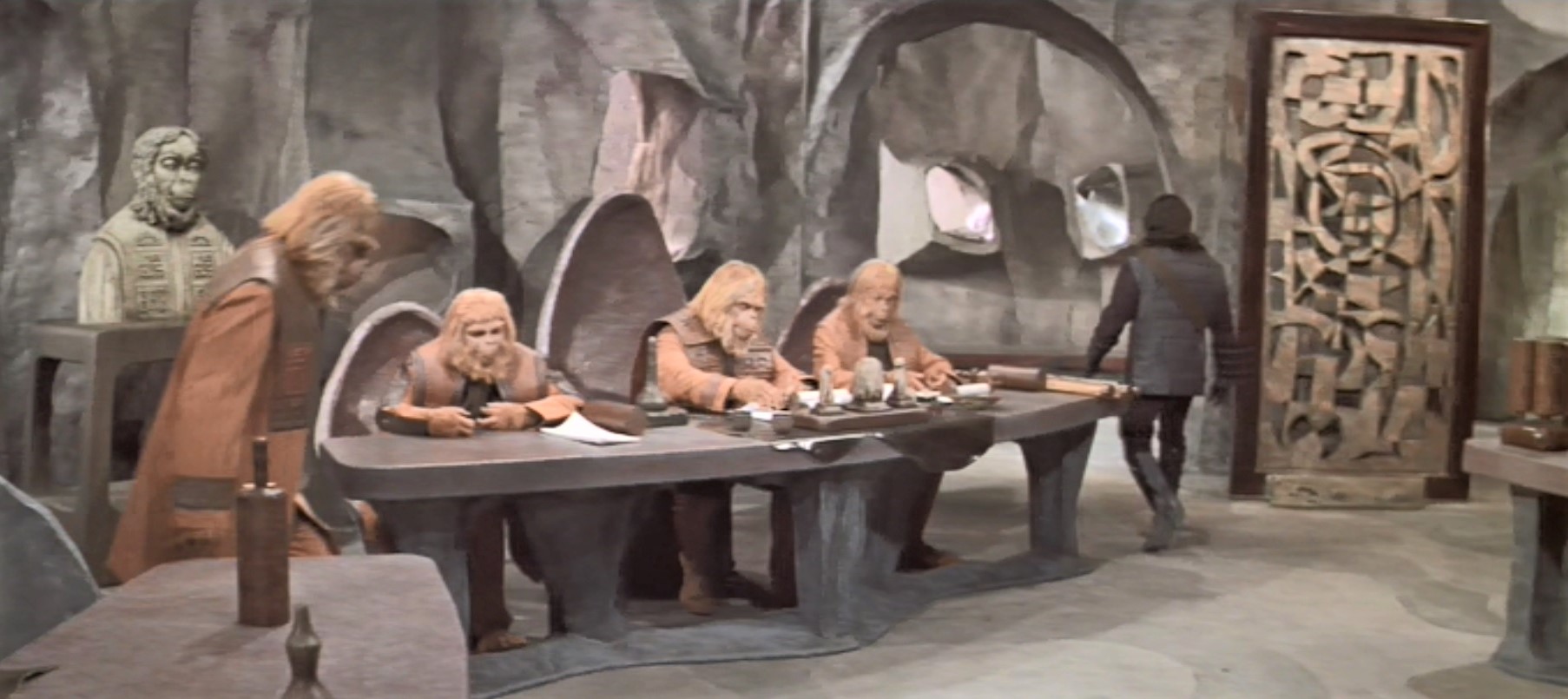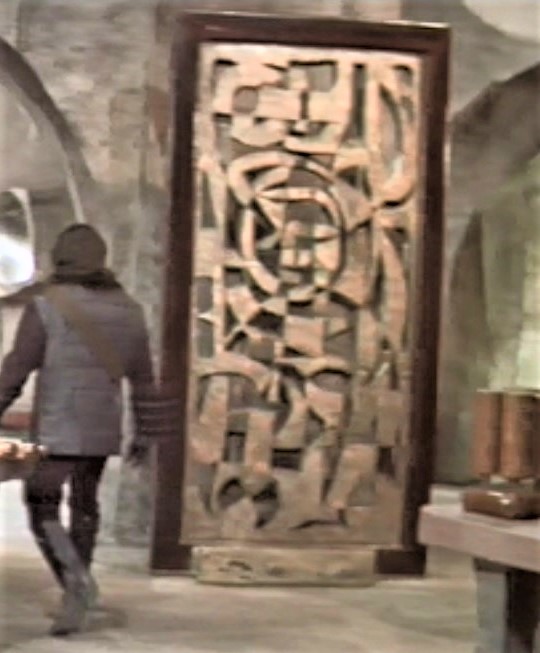Depicting a harsh and dystopian world (at least for the humans), “Planet of the Apes” has become an unlikely film franchise spanning over half a century. The original “Apes” from 1968 has some of the most fantastical, caveman-chic sets of any of the films. Art Directors William Creber and Jack Martin Smith were charged with the difficult task of building an entire futuristic world while limited by the budget of the first in an unknown, untested yet-to-be movie franchise.
Forbidden Zone
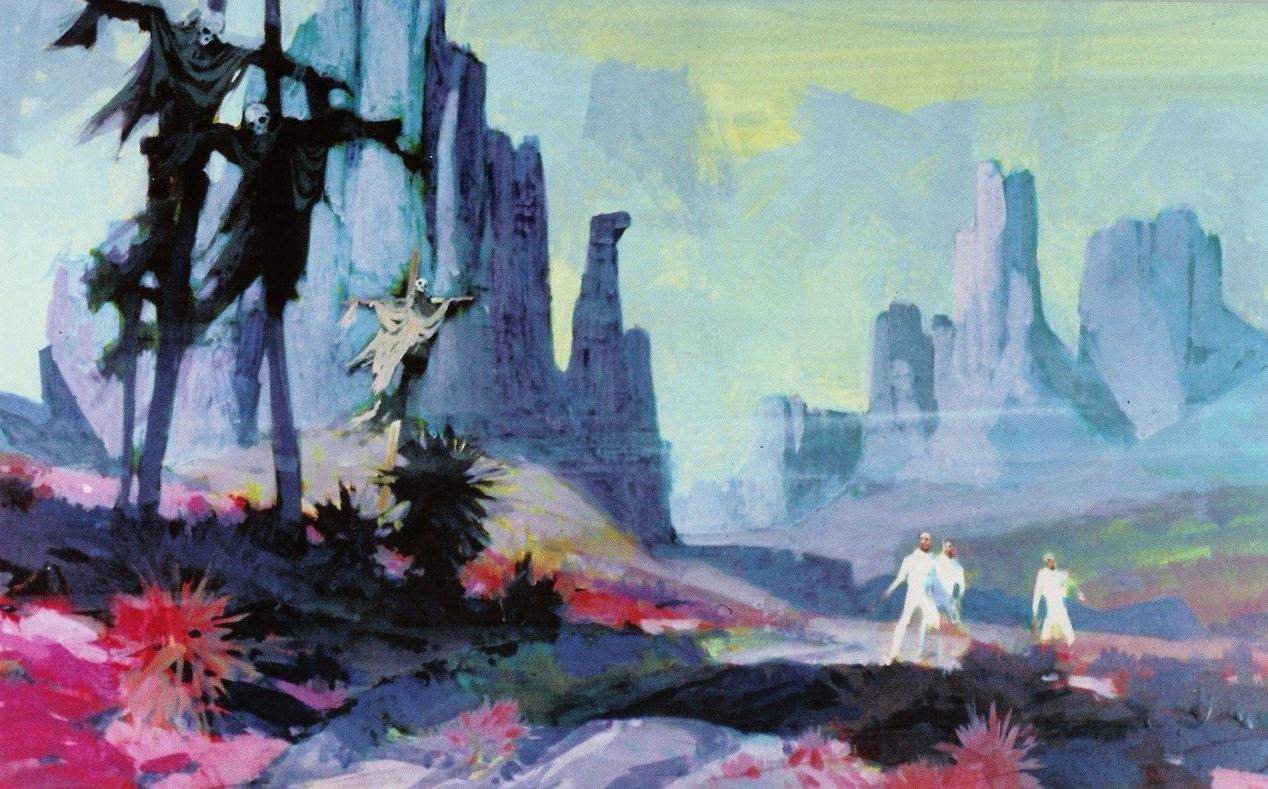
Ape Village
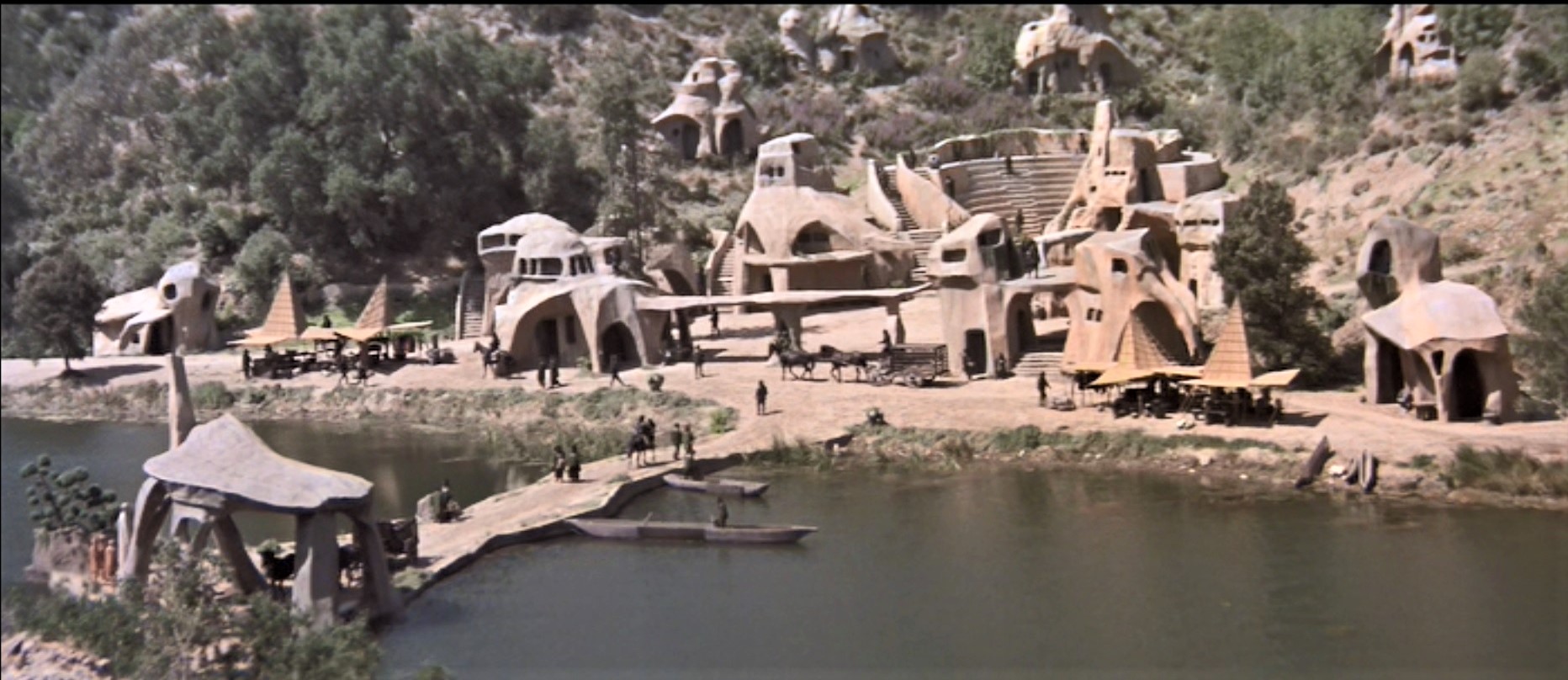
As a result of the film’s lower budget, the centerpiece of the film, Ape Village, was filmed at 20th Century Fox’s movie ranch (now Malibu Creek State Park) less than an hour from its Century City studio. Except for a wide establishing shot (below) that shows just how small the set was, all other shots were kept tight and low by director Franklin J. Schaffner to disguise its tiny stature. Used also for “The Left Hand of God” with Humphrey Bogart the lake was dredged and enlarged by Fox over its early years of ownership.
Concept Sketch of Ape Village
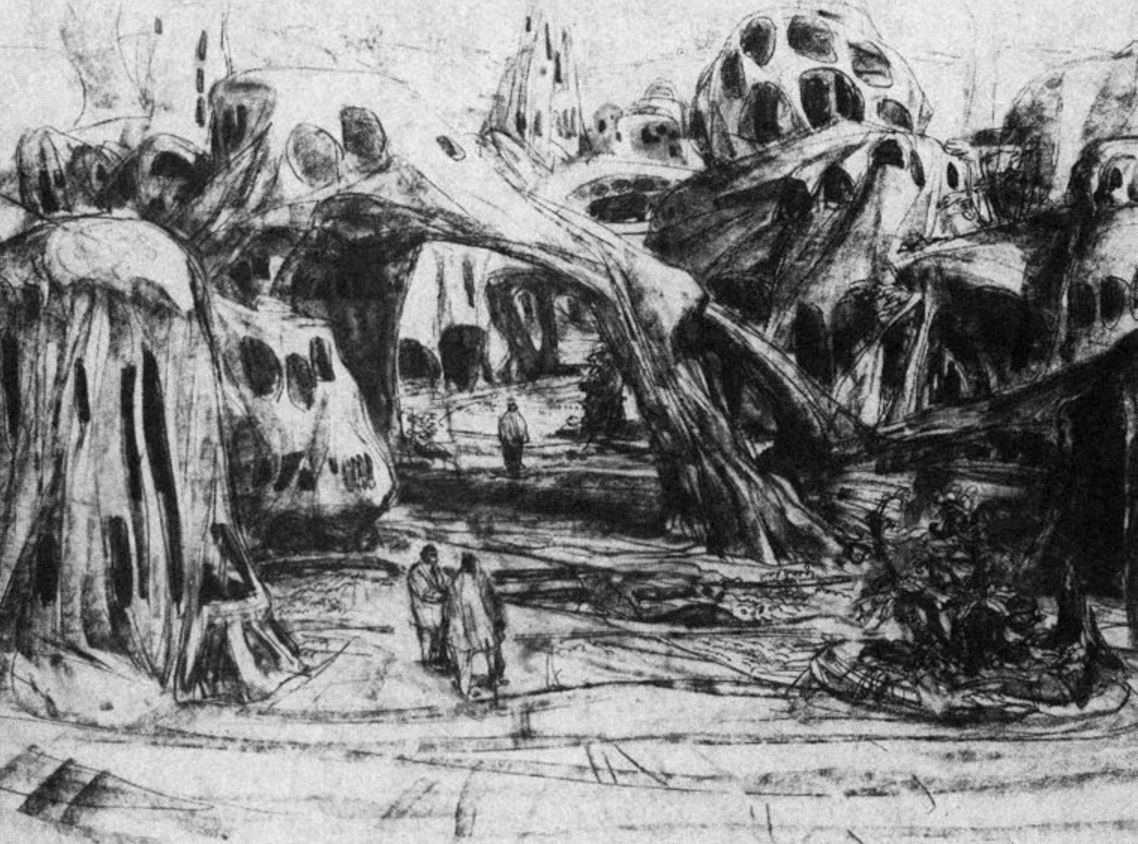
Mentor Huebner depicted a Gaudi world of craggy, skull-like buildings carved from stone.
Buildings Surrounding the Village
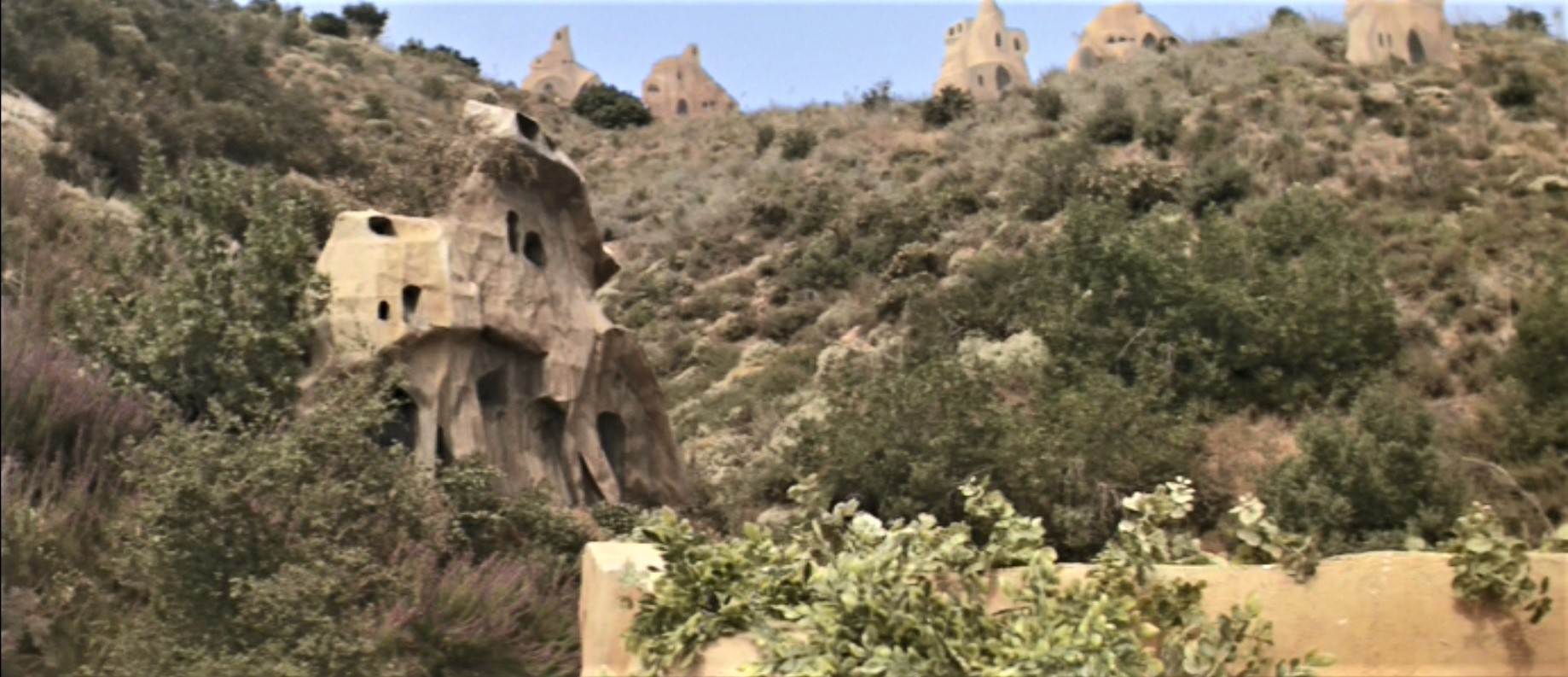
To give Ape Village a greater sense of size, additional buildings were constructed on the hills surrounding the town. Forced perspective likely was used to make the buildings look larger and farther away than they really were.
Stone Sky Bridge
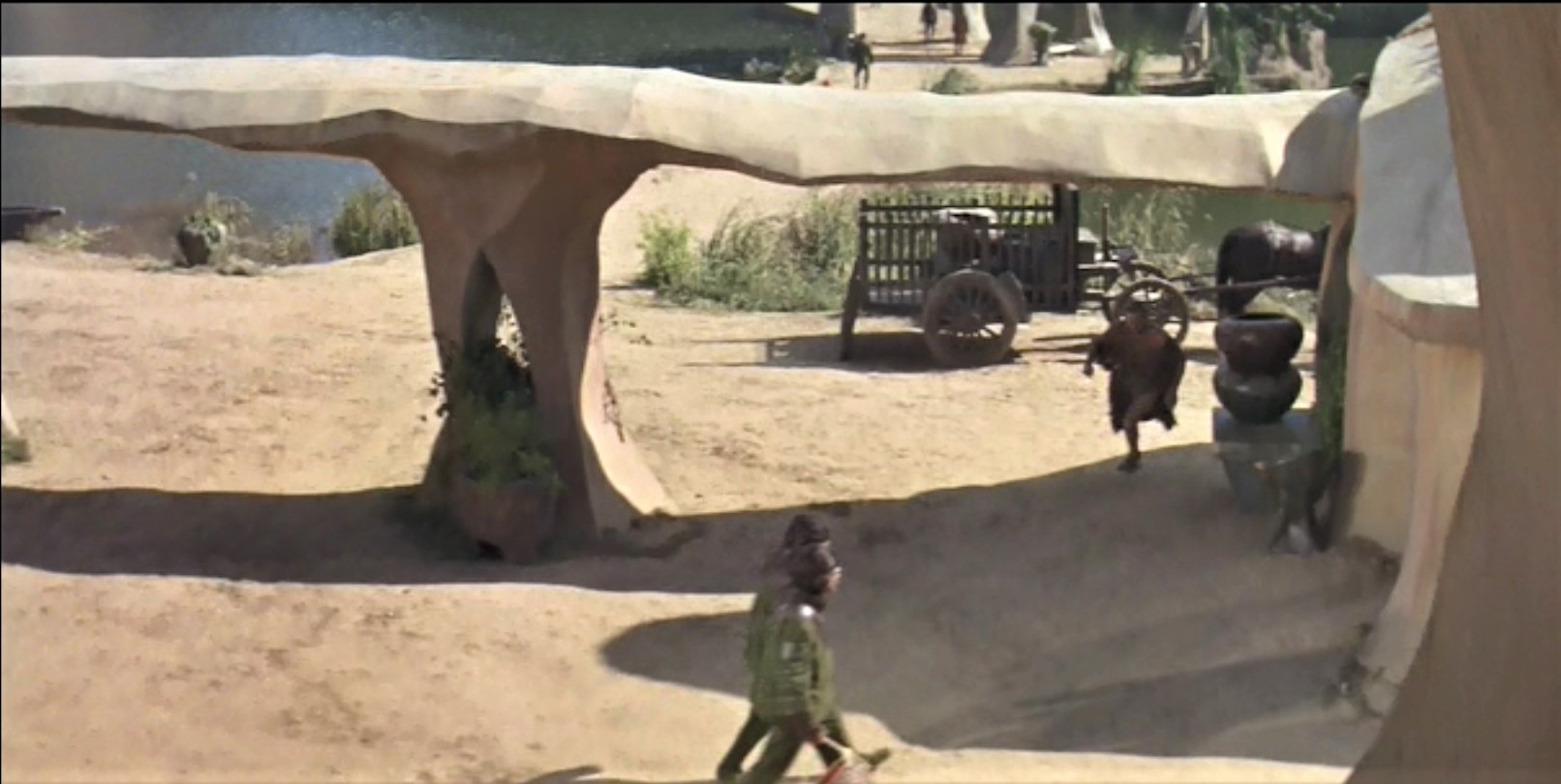
Amphitheater
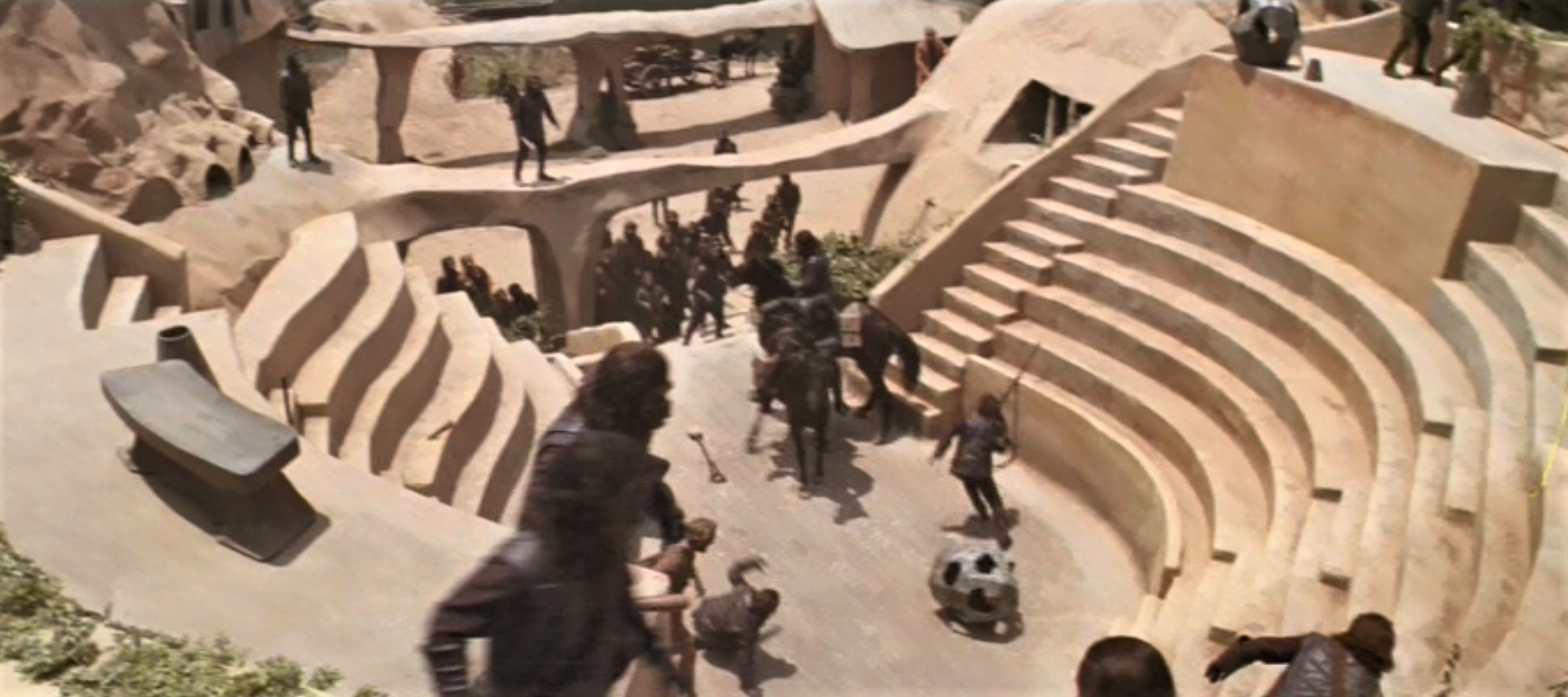
Church and Unique Circular Room Divider
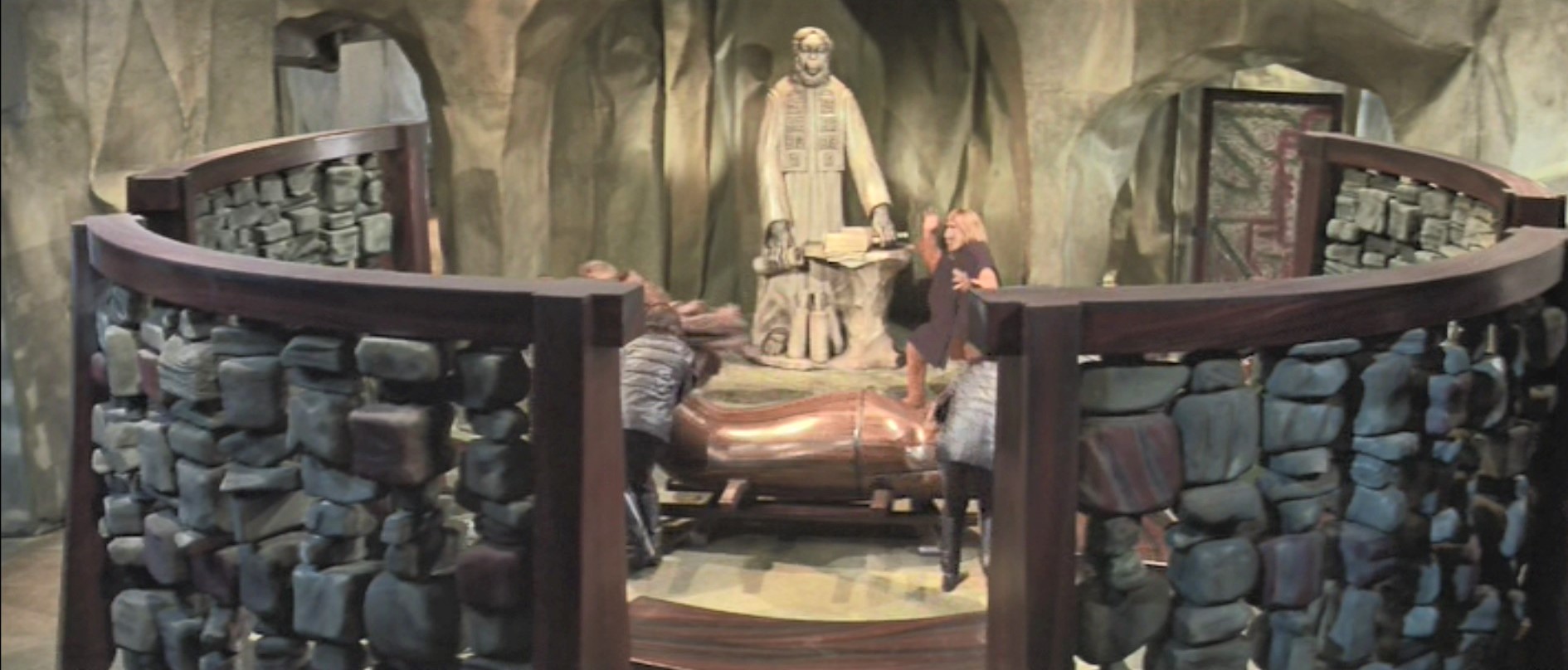
The Apes’ church was enclosed by a semi-circular room divider made of stacked stones.
Museum of Man
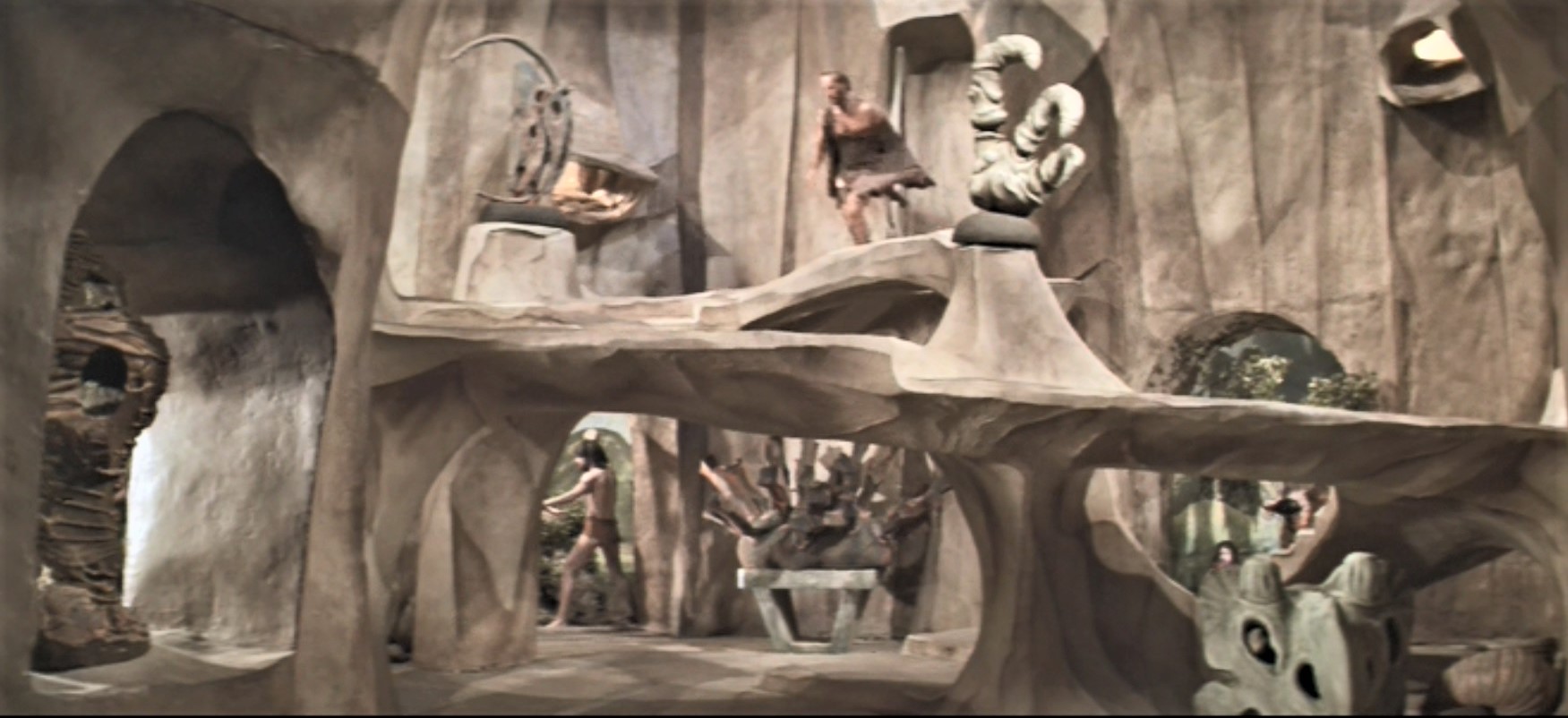
Hallway
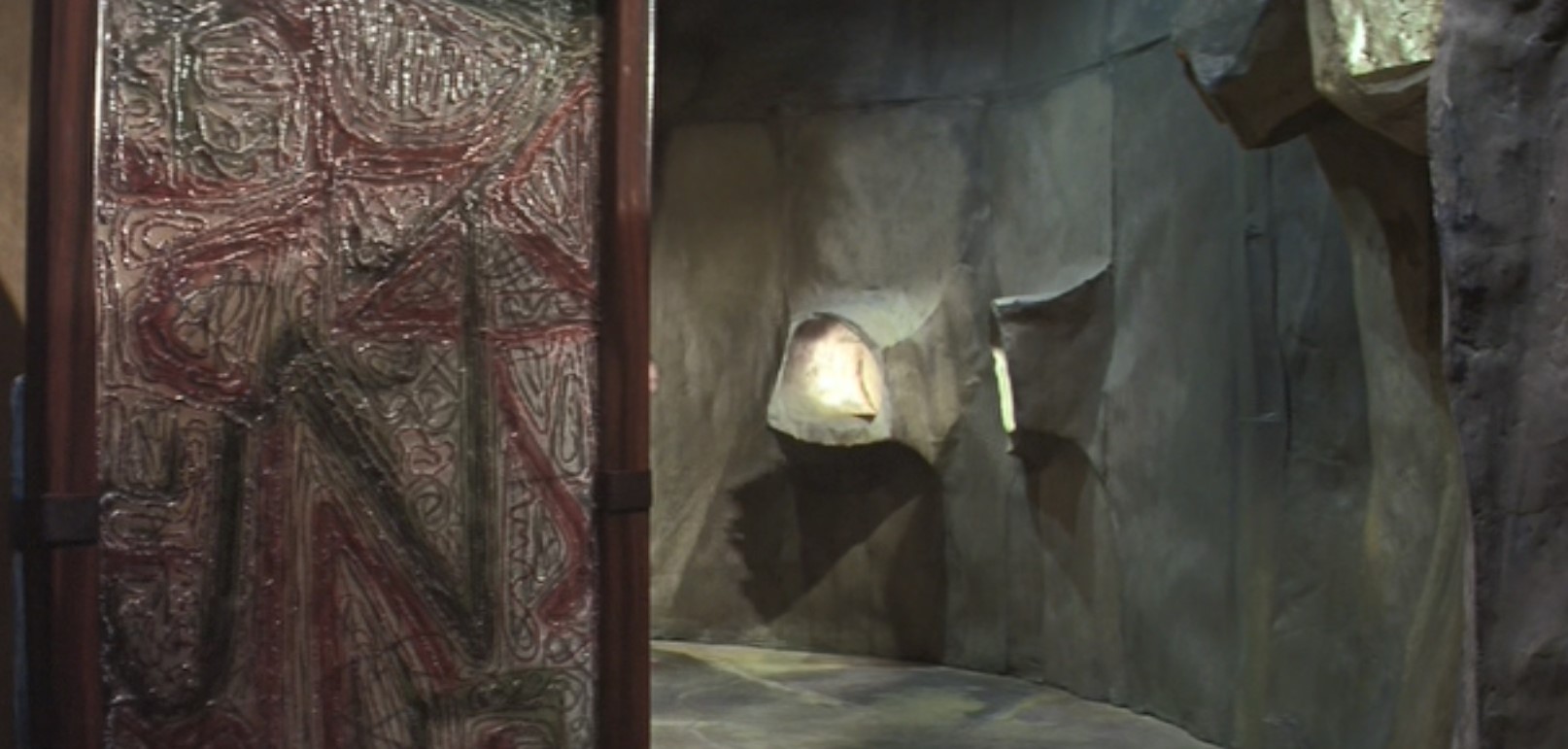
Another Hallway
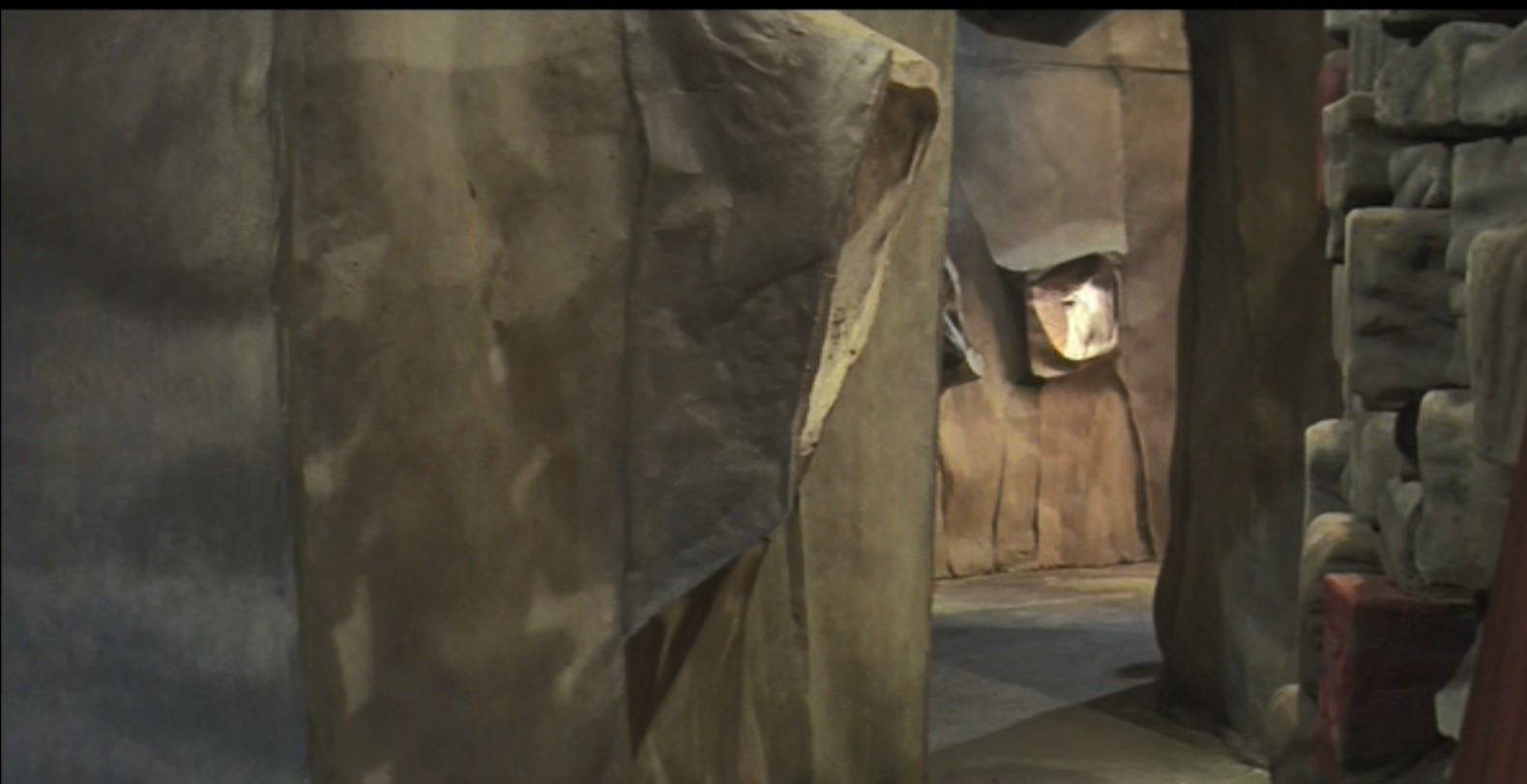
Courtroom
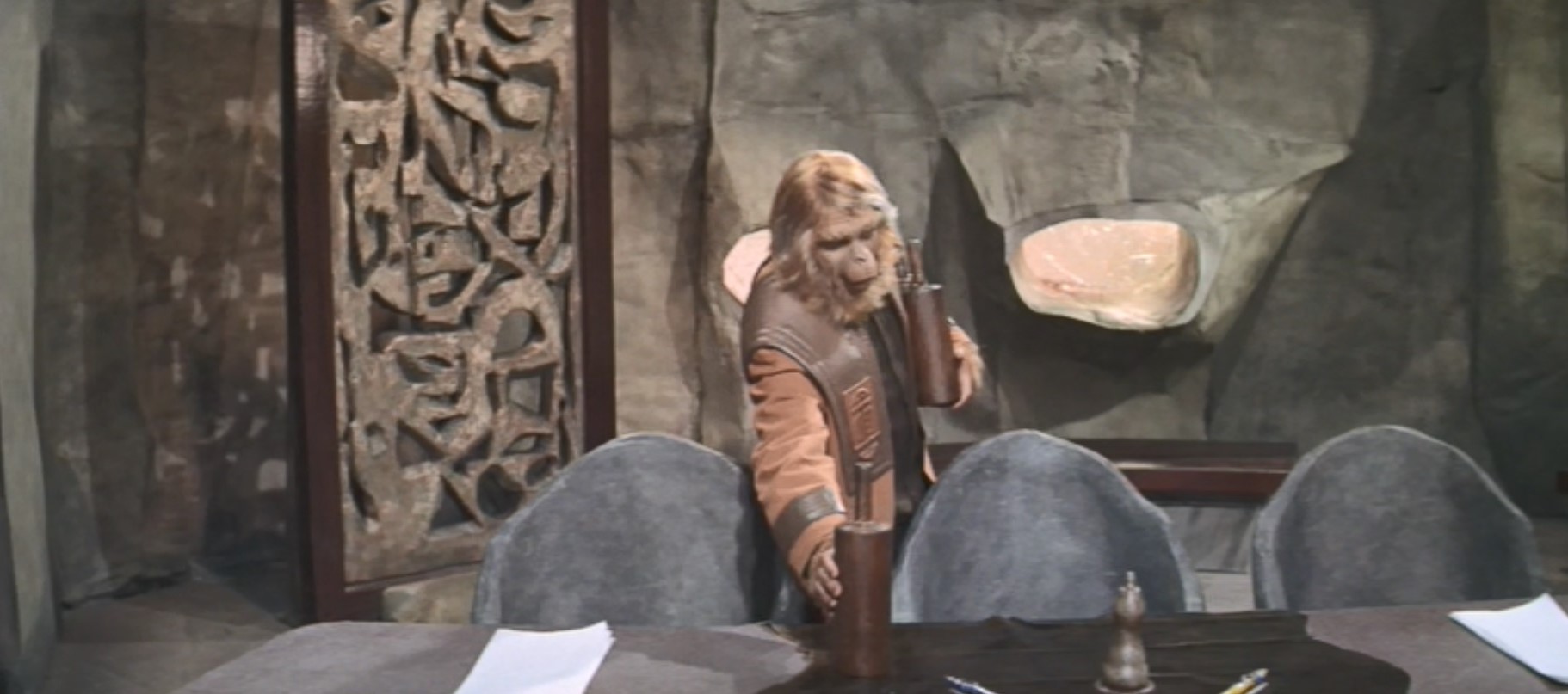
Courtroom Room Divider
